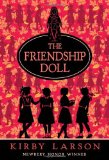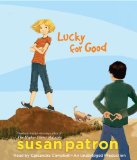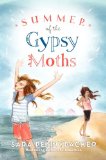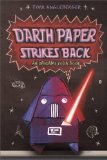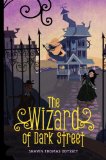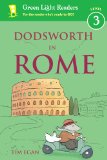Review of The Hero’s Guide to Saving Your Kingdom, by Christopher Healy
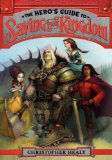 The Hero’s Guide to Saving Your Kingdom
The Hero’s Guide to Saving Your Kingdom
by Christopher Healy
Walden Pond Press, 2012. 438 pages.
Starred Review
Have you ever noticed how many fairy tales claim that the hero action was done by Prince Charming? The author of this book explains that there’s a reason for that.
Blame the lazy bards. You see, back in the day, bards and minstrels were the world’s only real source of news. It was they who bestowed fame on people. They were the ones who sculpted any hero’s (or villain’s) reputation. Whenever something big happened — a damsel was rescued, a dragon was slain, a curse was broken — the royal bards would write a song about it, and their wandering minstrels would perform that tune from land to land, spreading the story across multiple kingdoms. But the bards weren’t keen on details. They didn’t think it was important to include the names of the heroes who did all that damsel rescuing, dragon slaying, and curse breaking. They just called all those guys “Prince Charming.”
It didn’t even matter to the bards whether the person in question was a truly daring hero (like Prince Liam, who battled his way past a bone-crushing, fire-blasting magical monster in order to free a princess from an enchanted sleeping spell) or some guy who merely happened to be in the right place at the right time (like Prince Ducan, who also woke a princess from a sleeping spell, but only because some dwarfs told him to). No, those bards gave a man the same generic name whether he nearly died (like Prince Gustav, who was thrown from a ninety-foot tower when he tried to rescue Rapunzel) or simply impressed a girl with his dancing skill (like Prince Frederic, who wowed Cinderella at a royal ball).
If there was anything that Liam, Duncan, Gustav, and Frederic all had in common, it was that none of them were very happy about being a Prince Charming. Their mutual hatred of that name was a big part of what brought them together. Not that teaming up was necessarily the best idea for these guys.
That’s the narrator getting ahead of himself. The Princes Charming don’t start out teaming up. Things start when Cinderella decides Prince Frederic has too little sense of adventure. She wants to go find Rapunzel, who really seems to have adventures. She ends up getting involved with a witch, and Gustav and Frederic try to save her. Meanwhile, Prince Liam discovers that Briar Rose is not a nice person at all. He doesn’t want to marry her. But she has her little ways of getting revenge.
But all four princes encounter one another and end up having to fight the witch, who now has a big plot to massacre thousands, including the princes and destroy the kingdoms.
This book is very funny, and a great twist on all the old fairy tale themes. I think this would be excellent classroom reading that would keep an elementary class hooked day after day.
Now, I myself thought the first hundred pages or so were hilarious. After that, it started to drag for me. It wasn’t really less funny; it was just going on and on and on. I’d happily read a chapter a night, but not until the last hundred pages or so did I get absorbed enough to finish up, so the book took me more than a week to finish. I would have liked it a good bit shorter, but I doubt that kids will mind.
The author keeps his irreverent and humorous tone throughout the book. Here’s where Frederic meets Gustav:
Over the years, Frederic had met his fair share of other princes. None of them were anything like this prince of Sturmhagen. Gustav was so gruff. He had no patience, no manners, and ridiculously poor communication skills. Frederic could only presume the man’s flamenco dancing was just as awkward.
Lots of silliness; lots of surprises; lots of fun coincidences. My only complaint is that it runs long-winded, but the better to keep kids entertained, right? And judging by the “Book 1” on the side, there will be more to come in the future.
christopherhealy.com
harpercollinschildrens.com
Find this review on Sonderbooks at: www.sonderbooks.com/Childrens_Fiction/heros_guide.html
Disclosure: I am an Amazon Affiliate, and will earn a small percentage if you order a book on Amazon after clicking through from my site.
Source: This review is based on a library book from the Fairfax County Public Library.
